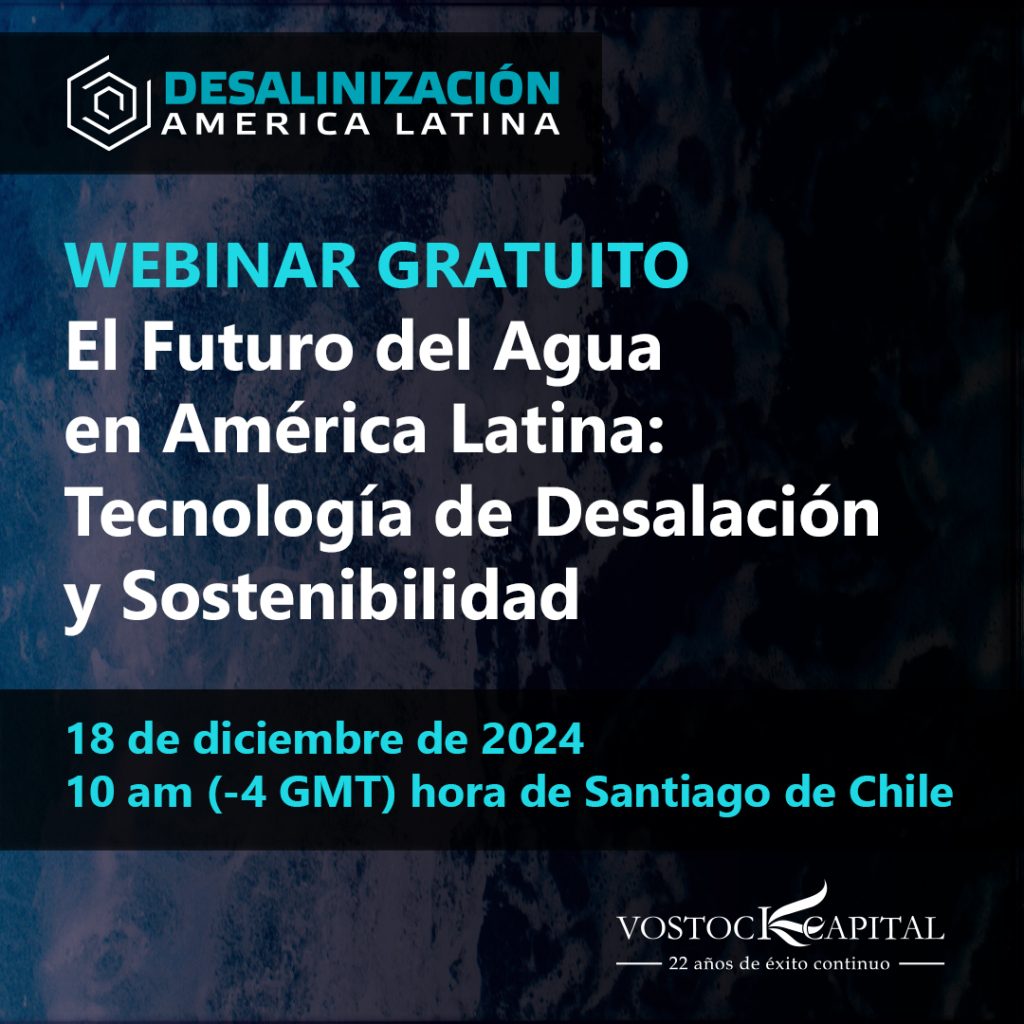
An American entrepreneur says he has a better way to extract lithium there.
- Chinese and Russian industrial giants seek to tap mineral deposits vital to electric cars.
A Texas entrepreneur has his own strategy: the long game.
By Clifford Krauss/NYT
SALAR DE UYUNI, Bolivia
EnergiesNet.com 12 22 2021
The mission was quixotic for a small Texas energy start-up: Beat out Chinese and Russian industrial giants in unlocking mineral riches that could one day power tens of millions of electric vehicles.
A team traveled from Austin to Bolivia in late August to meet with local and national leaders at a government lithium complex and convince them that the company, EnergyX, had a technology that would fulfill Bolivia’s potential to be a global green-energy power. On arriving, they found that the conference they had planned to attend was canceled and that security guards blocked the location.
Still, the real attraction was in plain sight: a giant chalky sea of brine high in the Andes called the Salar de Uyuni, which is rich in lithium, among several minerals with growing value worldwide because they are needed in batteries used in electric cars and on the power grid.
Surrounded by rusty equipment, empty production ponds and pumps uncoupled from pipes, it seemed a forlorn spot. But to Teague Egan, EnergyX’s chief executive, it had nothing but promise.
“This is the new Saudi Arabia,” he promised.
The Indigenous Quechua people revere the Salar de Uyuni, 4,000 square miles of salt flats that their forebears believed were the mixture of a goddess’s breast milk and the salty tears of her baby. For Mr. Egan, the site is “pure white beauty as far as the eye can see.”
With a quarter of the world’s known lithium, this nation of 12 million people potentially finds itself among the newly anointed winners in the global hunt for the raw materials needed to move the world away from oil, natural gas and coal in the fight against climate change.
Eight foreign companies have been competing in recent months to establish pilot lithium projects here, including four from China and one from Russia, countries that have had friendlier relations with Bolivia’s government than the United States has.
Just as wildcatters have long sought riches prospecting for oil, the clean energy revolution is spawning a wave of gritty entrepreneurs who hope to ride a new boom, vaulting themselves into the intersection of geopolitics and climate change. Some are familiar names like Elon Musk at Tesla, while Mr. Egan and others are strivers looking for their first break in mineral-rich places like Bolivia, the Democratic Republic of Congo and the South Pacific.
Mr. Egan is among the determined underdogs. His company, with 30 employees, is one of two from the United States among the eight contenders to develop Bolivia’s lithium reserves.
Lithium is a basic component of lithium-ion batteries, enabling the flow of electrical currents. Because of the metal’s light weight, long life, large storage capacity and easy recharging, demand is expected to grow exponentially over the next decade to power an expanding fleet of vehicles produced by Tesla, Ford Motor, General Motors and other carmakers and spread power grid battery storage for renewable energy. This year alone, prices for lithium compounds are up over 200 percent on several global markets.
Mr. Egan, 33, had never worked in the energy industry before starting EnergyX in 2018 to pursue lithium projects. With his hair slicked back, frequently unshaven and wearing his baseball cap backward, he projects youthful exuberance and self-confidence.
He established a book club at his company and assigned a biography of Thomas Edison as the first offering to send a message to his colleagues: “You can try 100 times and give up. Edison tried 17,000 plants to produce domestic rubber.”



Despite the bravado, he would appear to be an unlikely character to drive Bolivia’s energy future. He has never worked in Latin America and speaks virtually no Spanish.
But for Mr. Egan, the only thing that is really important is his belief that his technology to coax the lithium out of the Andean brine is the best to finally make Bolivia an energy power.
“In Bolivia they are so sensitive about the politics,” he said. “I just don’t understand why they should not do what is in the best interest of the country. I can only control what I can control.”
Race to the Future
Players in the clean energy revolution are increasingly caught in a cycle of exploitation and greed over resources. At the center of it is the quest for a prized metal: cobalt, a key ingredient in electric cars.
- Global Rivalries: The competition for cobalt has set off a power struggle between China and the United States in Congo.
- Corporate Champion: With the blessing of Beijing, a Chinese company became among the biggest suppliers of electric car batteries in the world.
- How the U.S. Lost Ground: Americans failed to safeguard decades of investments in Congo, essentially surrendering resources to China.
- ‘Blood Diamond of Batteries’: A bid to reform Congo’s cobalt mining, key to a push for clean energy, is rife with intrigue.
- Emporium of Ambition: Everyone passing through the Fleuve Congo Hotel in Kinshasa seems determined to grab a piece of the nation’s wealth.
- Hunter Biden’s Business Ties: A firm co-founded by the president’s son facilitated the sale of a cobalt mine in Congo to a Chinese company.
‘The Lithium Is for Bolivians’
There is much that Mr. Egan cannot control in this country long riddled with coups and racial, ideological and regional divisions.
Bolivia’s governing party, the Movement for Socialism, is led by former President Evo Morales, who tried to draw the country closer to China before protests and the military forced him from power two years ago.
The current president, Luis Arce, who was Mr. Morales’s economy minister, heads a coalition of social democrats and more doctrinaire leftists. He faces challenges from local movements that object to the socialist government and are wary of foreign interests, seeing them as exploiters of Bolivia’s mineral wealth going back to the 17th century.
Only two years ago, a lithium deal between Mr. Morales and a German company led to protests that eventually spread around the country. Mr. Morales was forced to scrap a contract only a week before he fled the country.
Marco Pumari, a local politician who led the protests, demanded a tripling of royalties for Potosí Province and local involvement in ownership of lithium enterprises. He said that his demands had not changed, and that his opposition to the ruling socialists remained steadfast.
“As soon as they publicly choose the foreign companies, the province will mobilize,” he said in an interview. “The government is playing with fire.”
In August, about 80 protesters took over two roads, blocking Mr. Arce from visiting government lithium facilities and demanding that he fire the new head of the state-owned lithium company and give local residents greater say in decisions about lithium production. The protest forced the cancellation of the conference that Mr. Egan and his EnergyX team were scheduled to attend.
“We need asphalt roads and textile factories,” said Rosa Belen Julaca, a Potosí quinoa farmer who joined the protest even though she generally supports the government. “If they don’t listen to us, we’ll keep blocking the roads.”
Government officials soon visited to calm tensions.



Women poured colorful confetti on the heads of officials and draped their necks in wreaths of flowers. The visitors included Franklin Molina, the energy minister, and the head of the state lithium company, whom the protesters had wanted ousted.
At a festive community meeting punctuated by Indigenous music, dance and poetry, they promised jobs and social programs from a lithium industry that would someday include manufacturing batteries and even electric cars.
“The lithium is for Bolivians,” Mr. Molina declared to cheers.
Energy experts say a major increase in Bolivian lithium production would keep battery prices down, helping President Biden achieve his goal of electrifying half of new cars sold in the United States in 2030, up from 4 percent today.
ADVERTISEMENTContinue reading the main story
“The amount of lithium we need in any of our climate goals is incredible,” said Anna Shpitsberg, the U.S. deputy assistant secretary of state for energy transformation. “Everyone is trying to build up their supply chains and think about how to be strategic.”
But Washington has little sway in Bolivia, whose leaders have long disagreed with the American approach to drug policy and Venezuela. That may explain why some energy executives do not think Bolivia is worth the risk.
“You’ve had 30 years’ worth of projects in Bolivia with almost nothing to show,” said Robert Mintak, chief executive of Standard Lithium, a publicly traded mining company based in Vancouver, British Columbia, referring to lithium development efforts dating back to 1990. “You have a landlocked country with no infrastructure, no work force, political risk, no intellectual property protection. So as a developer, I would choose someplace else that is safer.”
Mr. Egan sees the odds differently.
‘I Need to Be Involved’
That Mr. Egan has gotten this far is a marvel. He learned about Bolivian lithium only by chance when he and a friend crisscrossed South America as tourists in 2018.
When they got to the salt flats, a guide explained that they were standing on the world’s largest lithium reserve. “I thought, ‘I don’t know how I’m going to do this, but I need to be involved,’” Mr. Egan said.
He had tried his hand as a sports and music agent and ran a small investment fund at the time. He had invested in Tesla in 2013 at $9 a share; it now trades around $975. (He would not reveal how many shares he had bought and how many he still had.)
But he felt that he wasn’t achieving much. Before Mr. Egan traveled to South America, his father, Michael, the founder of Alamo Rent A Car, advised him to make two lists — of his five biggest passions and of the five industries he thought would grow fastest in the coming decades. Renewable energy was on both lists.
Mr. Egan read up on lithium. He settled on filtering membranes as the vital missing link to make lithium evaporation ponds more productive and profitable. Then he came across a 2018 paper written by Benny Freeman, a chemical engineering professor at the University of Texas at Austin, and some scientists working in Australia about a new type of membrane with atom-size pores that could be used to separate and purify lithium salts from rocks and brines.
He traveled to Austin and Australia, and Mr. Egan and Dr. Freeman hit it off.

The two made an unlikely pair. Dr. Freeman, 60, was born into poverty in rural North Carolina and was the first person in his family to graduate from high school. Mr. Egan grew up wealthy in southern Florida. Dr. Freeman became passionate about chemistry handling pesticides on his family’s apple farm. Mr. Egan said he had learned business skills from his father at the dinner table.
Mr. Egan returned again and again to Bolivia, but he made little progress selling officials on his technology. “All these people, their hands are just tied behind their backs,” he said, since they are scared to offend leaders at the top.
A big break came in April 2020 when Diego von Vacano, a Bolivian political science professor at Texas A&M University — and an informal adviser to Mr. Arce, then a leading presidential candidate — contacted Dr. Freeman for advice on lithium extraction. Dr. Freeman connected Dr. von Vacano and Mr. Egan, and the Texas A&M professor became Mr. Egan’s vital bridge to Bolivia.
After Mr. Arce won, Mr. Egan attended the inauguration. With Dr. von Vacano’s help, Mr. Egan made critical connections in the new administration.
He was not able, though, to secure a meeting with the new president. During one trip, he tracked down Mr. Arce when they were both in Santa Cruz. Accompanied by Dr. von Vacano, Mr. Egan finally got a glimpse of the president eating in the canvas-covered wooden stalls of a fish market.
But as he approached the leader, Dr. von Vacano stopped him. Mr. Arce was eating with a congressman antagonistic toward the United States. Avoiding a scene, Mr. Egan walked away. He returned home, but he was not done trying.
A Visit and a Blessing

In August, after the conference was canceled, Mr. Egan and his team flew to La Paz, the seat of government, and kept knocking on doors, hoping to capitalize on the contacts that Mr. Egan had made among top Energy Ministry officials.
As always, there were hurdles.
When they met with Carlos Humberto Ramos, the newly appointed head of the state lithium company, to persuade him of the advantages of their approach, they found that he had little understanding of EnergyX’s membrane technology.
Mr. Egan’s team returned to Mr. Ramos the next day, and after explaining its technology to his top technicians, the team was told that it could visit the lithium complex and that an initial agreement approving EnergyX’s project was virtually a done deal.
That night, EnergyX’s strongest ally in the government — Álvaro Arnez, a deputy energy minister overseeing lithium development — gave the arrangement his blessing. He joined Mr. Egan’s team for a celebration at an elegant La Paz restaurant over plates of dried Amazonian catfish and roast pork with pear kimchi.




The next morning, Mr. Egan and his team flew back to the salt flats.
They inspected several shimmering man-made ponds, which hold brine for evaporation — a method of lithium extraction that has been hampered by heavy seasonal rains.
Even when dry, the lithium must be separated chemically from other minerals, a process that wastes much of the desired lithium.
Mr. Egan told technicians that his technology could greatly increase and speed up production.
There were disagreements over where to put the proposed pilot project, and when Mr. Egan suggested ways to move forward toward commercialization, the technicians told him to wait until initial test results were in. But he was content that he toured the facilities before other companies.
In an interview, Mr. Molina, the energy minister, said Chinese and Russian diplomats were lobbying on behalf of their own companies, but he insisted that “there is room for Americans, Russians, Chinese, Japanese, whoever wants to invest as long as they respect our sovereignty.”
China has advantages. It already controls substantial lithium assets in South America, and its businesses have made roughly $4.5 billion in lithium investments over the last three years in South America and Mexico. Chinese banks give low-interest loans to Chinese mining and construction companies operating abroad to advance President Xi Jinping’s plans to dominate industries of the future.
As for Russia, President Vladimir V. Putin has spoken by phone with Mr. Arce at least twice about lithium and other matters, Russian officials said.
Mr. Egan said he was getting virtually no help from the U.S. government. And American officials say their best hope is to gently press for a level playing field.
The long game has paid off for Mr. Egan, at least so far. He signed an agreement to start the pilot, and in October he shipped a container to Bolivia outfitted with pumps, valves, tanks and membranes to separate lithium from brine. If the pilot shows promising results, he may be able to proceed with a commercial project.
Of the 20 companies in competition at the start of the year, the government has named eight to carry out pilots, including one other small American company, Lilac Solutions of California.
All the contenders — the eighth is from Argentina — will be competing for Bolivian government attention and resources like power hookups and skilled local technicians in the months ahead before any can be approved to move toward commercial operations.
“We still need to do a demonstration and scale it up,” Mr. Egan acknowledged. “We still need to go commercial. I mean, this is just Day 1.”
By Clifford Krauss from The New York Times-NYT
nyt.com 12 16 2021








